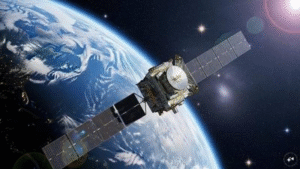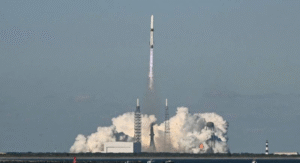Blue Origin has achieved a major milestone in the private space industry by successfully launching NASA’s ESCAPADE mission to Mars and completing.
its first booster landing with the New Glenn rocket. The accomplishment marks a significant step forward for Jeff Bezos’s space company as it competes with Elon Musk’s SpaceX in an increasingly competitive arena of reusable launch systems and deep space missions.
The launch, which took place at Cape Canaveral after multiple weather-related delays, became one of the most anticipated events of the week. High solar activity and unfavorable conditions on Earth had forced Blue Origin to postpone earlier attempts, but the eventual liftoff proved worth the wait. New Glenn, standing 322 feet tall, soared into the sky carrying two NASA spacecraft designed to study the Martian environment and support future human exploration efforts.
What followed was a breakthrough moment for Blue Origin. For the first time, the company successfully returned its orbital-class booster to a floating landing platform. The booster descended in a controlled, precise landing that immediately drew loud applause from the launch site. Until now, only SpaceX had accomplished reusable landings in this class of rockets, making Blue Origin’s achievement a defining moment in its trajectory.
Industry figures and space enthusiasts reacted quickly. Elon Musk congratulated Jeff Bezos and the Blue Origin team, while other SpaceX employees shared similar praise. Jared Isaacman, recently nominated to lead NASA, called the achievement “exciting” and a notable leap in spaceflight innovation.
Following the booster recovery, NASA confirmed that the ESCAPADE twin spacecraft—named Blue and Gold—had successfully deployed. The spacecraft will initially enter a safe orbit to collect data on space weather before using Earth’s gravity to sling toward Mars in 2026. They are expected to reach the Red Planet in 2027, offering new insights into its climate history and atmospheric behavior.
The mission demonstrates a promising advancement in launch flexibility. Instead of waiting for ideal Earth-Mars alignment, this type of trajectory could allow NASA to send more frequent missions in the coming years. Experts say this could reshape strategies for planetary exploration and pave the way for long-term human missions.
Blue Origin’s success follows the rocket’s maiden flight in January, where the payload reached orbit but the booster was lost during descent. The latest landing marks a turning point, placing the company closer to establishing reliable and cost-efficient reusable launch operations. With increasing pressure on NASA to accelerate human missions to the Moon and Mars, the reusable New Glenn rocket could play a central role in future Artemis program launches and commercial space initiatives.
Industry analysts describe the achievement as a major confidence boost for Blue Origin. It reinforces the company’s expanding capabilities from Earth orbit missions to potential contributions in lunar transportation, Mars exploration, and commercial space station development.













